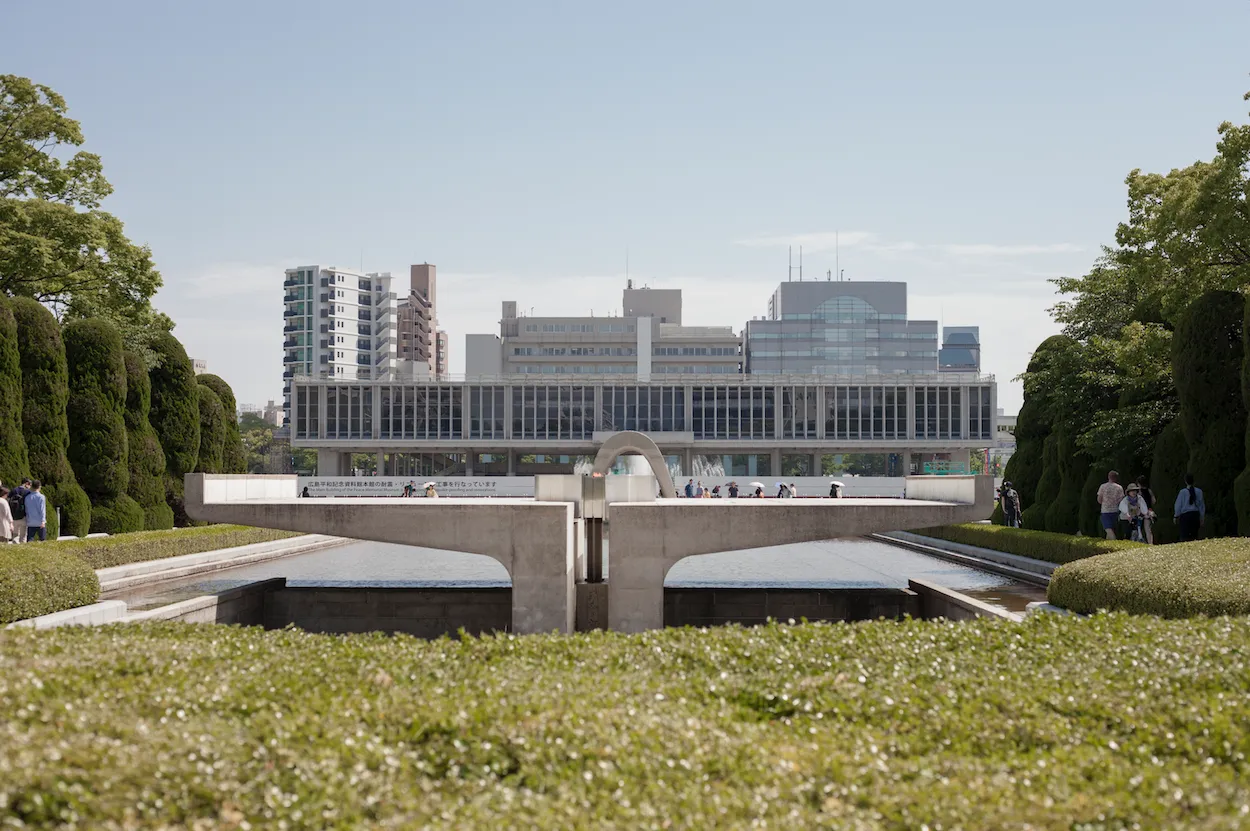Discover the poignant history of Hiroshima’s Peace Memorial Park and Museum, a testament to the impact of the atomic bomb that forever changed the city. Delve into the moving exhibits and learn about the lasting message of peace and reconciliation that resonates through the park’s iconic landmarks.
Reflecting on Hiroshima’s Tragic Past at the Peace Memorial Park
Hiroshima’s Peace Memorial Park and Museum serve as poignant reminders of the devastating events that occurred during World War II. As visitors enter the park, they are instantly greeted by the powerful presence of the A-Bomb Dome, a skeletal structure that stands as a symbol of the city’s resilience and strength in the face of immense tragedy.
The park offers a somber atmosphere, with beautifully kept gardens, lush greenery, and tranquil pools that provide a space for reflection and contemplation. Here, visitors can pay their respects to the victims of the atomic bomb that was dropped on Hiroshima on August 6, 1945.
Within the park, the Hiroshima Peace Memorial Museum stands as a testament to the stories of those affected by the bombing. Its exhibits, carefully curated and highly informative, showcase artifacts, photographs, and personal accounts that vividly portray the impact of the bomb on Hiroshima’s residents and the subsequent efforts towards peace.
As visitors explore the museum, they are confronted with the harrowing consequences of nuclear warfare, leaving them with a deeper understanding of the importance of seeking peaceful resolutions to conflicts. The museum’s mission is not only to educate visitors but also to serve as a call to action in advocating for a world free from the threat of nuclear weapons.
Reflecting on Hiroshima’s tragic past at the Peace Memorial Park provides a solemn reminder of the horrors of war while offering hope for a peaceful future. It encourages visitors to contemplate the fragility of life and the importance of pursuing international cooperation and disarmament in an effort to prevent any recurrence of such devastation.
Delving into the Exhibits of Hiroshima’s Peace Memorial Museum
The Peace Memorial Park in Hiroshima, Japan, is home to the Peace Memorial Museum, a poignant tribute to the atomic bombing that devastated the city during World War II. Stepping into the museum is like stepping back in time, as visitors are greeted with a comprehensive collection of artifacts, photographs, and personal stories that vividly depict the horrors of the nuclear attack.
Upon entering the museum, visitors are immediately exposed to the destructive power of the atomic bomb, with displays showcasing the impact on buildings, landscapes, and people. The exhibits include remnants of destroyed structures, such as a twisted metal staircase from a building that once stood near the bomb’s epicenter, serving as a haunting reminder of the immense force unleashed.
One of the most moving parts of the museum is the display of personal belongings of the victims, such as clothing, toys, and the iconic paper cranes. These objects serve as powerful symbols of the innocent lives that were lost and the devastating impact the bombing had on families and communities. Each item tells a story, evoking a deep sense of empathy and reflection.
As visitors progress through the museum, they come face to face with firsthand accounts from survivors, known as hibakusha, who bravely share their experiences. These personal testimonies provide a human perspective amidst the overwhelming destruction, highlighting the resilience and strength of the survivors in the face of unimaginable tragedy.
In addition to the exhibits, the museum also delves into the historical context leading up to the bombing and its aftermath, shedding light on the devastating effects of war and the importance of striving for lasting peace. This comprehensive approach ensures that visitors leave the museum not only with a deeper understanding of the events that unfolded in Hiroshima but also with a renewed commitment to prevent such tragedies from happening in the future.
Embracing the Message of Hope and Peace in Hiroshima
Hiroshima’s Peace Memorial Park and Museum stand as powerful symbols of resilience and the pursuit of peace. This historical site, located in the city of Hiroshima, Japan, is dedicated to commemorating the victims of the atomic bombing in 1945 and promoting a message of hope for a peaceful future.
The Peace Memorial Park serves as a poignant reminder of the devastating impact of nuclear weapons. It is home to the iconic Atomic Bomb Dome, which stands as a haunting testament to the destructive power of the bomb. Visitors can explore the museum, where they will find exhibits that document the horrors of the bombing, personal stories of survivors, and displays showcasing efforts towards disarmament and peace.
One of the park’s highlights is the Peace Bell, a symbol of unity and harmony, inviting visitors to ring it as a prayer for peace. The cenotaph, which contains the names of the victims, along with the Flame of Peace, serves as a perpetual flame, continuously burning until all nuclear weapons are abolished.
Moreover, the park offers the opportunity for reflection and remembrance. Visitors can stroll through tranquil gardens, offering a chance to connect with nature and find solace amidst the somber atmosphere. The park’s symbolic significance extends beyond its borders, encouraging visitors from around the world to embrace the message of hope and peace.
Conclusion
Hiroshima’s Peace Memorial Park and Museum stand as powerful reminders of the devastating effects of nuclear warfare. Through its exhibits and memorials, the park serves as a beacon of hope, promoting peace, understanding, and the abolition of nuclear weapons. It is a testament to the resilience and determination of the people of Hiroshima to ensure that such a tragedy never occurs again.



